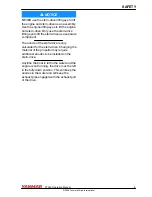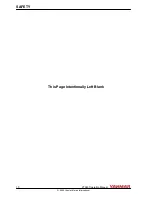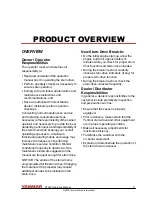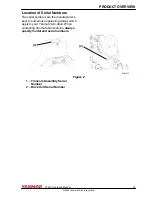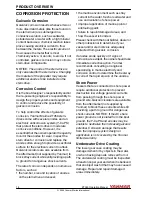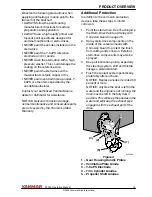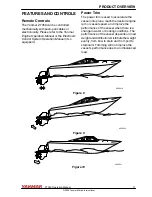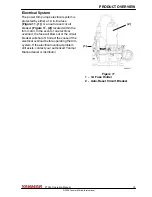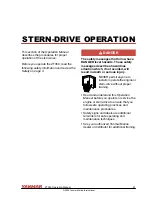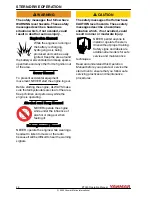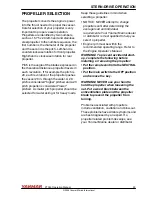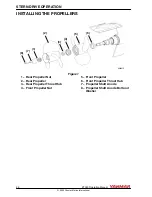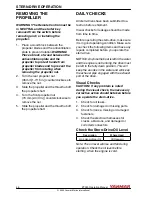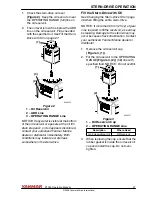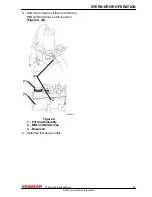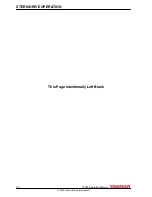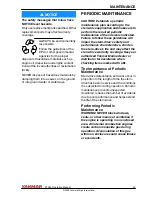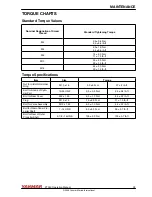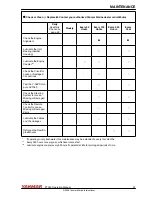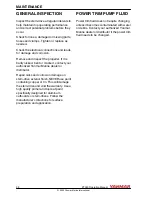
PROPELLER SELECTION
The propeller converts the engine’s power
into the thrust needed to propel the vessel.
Careful selection of your propeller is very
important to proper vessel operation.
Propellers are identified by two numbers,
such as 15.75 x 20 left-hand and stainless
steel propeller. In the number sequence, the
first number is the diameter of the propeller
and the second is the pitch. Left-hand is
counterclockwise rotation for front propeller.
Right-hand is clockwise rotation for rear
propeller.
Pitch is the angle of the blades expressed in
the theoretical distance a propeller travels in
each revolution. If for example the pitch is
20, each revolution of the propeller pushes
the vessel 20 in. through the water. A 28
pitch is considered “higher” pitched and a 20
pitch propeller is considered “lower”
pitched. A smaller pitch propeller should be
selected for water skiing or for heavy loads.
Keep these guidelines in mind when
selecting a propeller:
• NOTICE: NEVER attempt to change
propellers until after determining the
average load and individual
requirements. Your Yanmar Marine dealer
or distributor is most qualified to help you
select a propeller.
• Engine rpm must be within the
recommended operating range. Refer to
the Engine Operator’s Manual.
WARNING! To prevent accidental start-
up, complete the following before
installing or removing the propeller:
• Put the remote control to the NEUTRAL
position.
• Put the main switch to the OFF position
and remove the key.
WARNING! NEVER use your hand to
hold the propeller when loosening the
nut. Put a wood block between the
antiventilation plate and the propeller
blade to prevent the propeller from
turning.
Problems associated with propellers
include ventilation, cavitation and blow-out.
These problems have similar symptoms and
are best diagnosed by an expert. If a
propeller related problem develops, see
your Yanmar Marine dealer or distributor.
STERN-DRIVE OPERATION
ZT350 Operation Manual
23
© 2008 Yanmar Marine International

